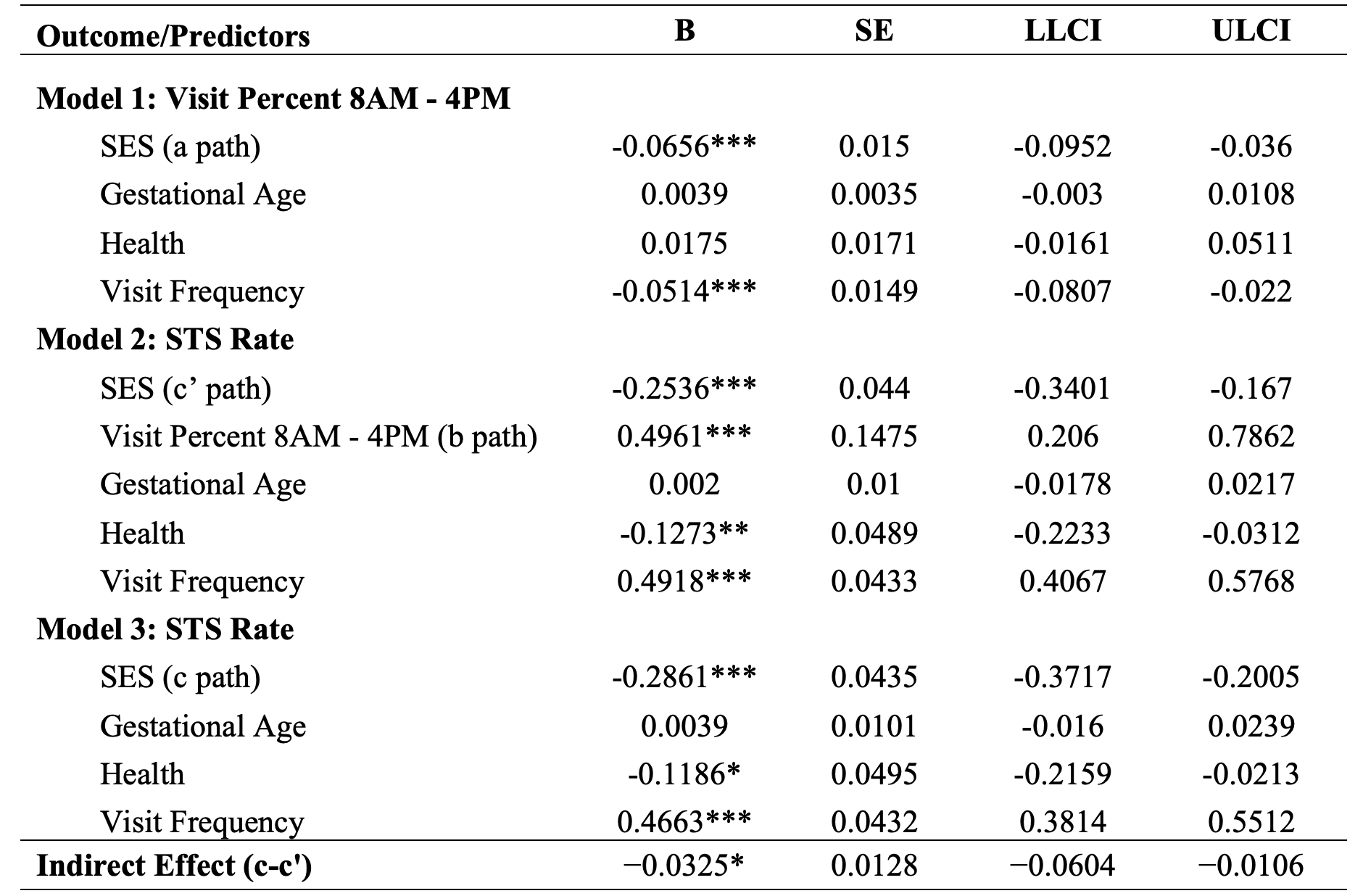Health Equity/Social Determinants of Health 2
Session: Health Equity/Social Determinants of Health 2
424 - Timing Disparities in NICU Visitation: Implications for and Family Engagement in Preterm Infant Care
Saturday, April 26, 2025
2:30pm - 4:45pm HST
Publication Number: 424.6872
Cristina Gutierrez, Lucile Packard Children's Hospital Stanford, Palo Alto, CA, United States; Virginia A. Marchman, Stanford University School of Medicine, Stanford, CA, United States; Heidi M. Feldman, Stanford University School of Medicine, Palo Alto, CA, United States; Melissa Scala, Stanford University School of Medicine, Palo Alto, CA, United States; Katherine Travis, Weill Cornell Medicine, White Plains, NY, United States; Molly F. Lazarus, Weill Cornell Medicine, New York, NY, United States

Molly F. Lazarus, BA (she/her/hers)
Clinical Research Coordinator
Weill Cornell Medicine and Stanford Medicine
New York, New York, United States
Presenting Author(s)
Background: Family visitation and engagement in the NICU are crucial for promoting positive outcomes in infants born preterm. While visitation frequency has been well-studied, the timing of visits remains underexplored. Daytime visits offer greater access to support services, medical rounds, educational opportunities, and clinical staff, all of which might impact family engagement in care. However, families may face multiple barriers to daytime visitation that may be exacerbated for those from low socio-economic (SES) backgrounds.
Objective: Examine visitation timing patterns and their relation to family engagement in care in high and low SES families.
Design/Methods: We analyzed electronic medical record data from 381 families with preterm infants ( < 32 weeks gestational age). We calculated overall visitation frequency (visits/NICU days) and examined the timing of visitation patterns in two ways: (1) the percentage of total NICU stay visits occurring during daytime (8AM-4PM) and evening (4PM-10PM) hours, and (2) weekly calculations of daytime and evening visit percentages to track longitudinal patterns. SES was determined by insurance status (public vs. private). Our primary measure of engagement in care was skin-to-skin (STS) care rate (minutes/day, adjusted for length of stay). Analyses controlled for infant health status and gestational age.
Results: Overall, only 39% of family visits occurred during daytime hours. While total visitation frequency was comparable across SES groups, longitudinal analyses showed higher-SES families visited more during daytime hours, while lower-SES families predominantly visited during evenings. These patterns intensified over time (see Table 1 and Figure 1). Lower-SES families had significantly lower STS care rates compared to higher-SES families (12.4 vs 26.0 minutes/day, p<.001). Daytime visitation predicted STS engagement, with mediation analysis showing visit timing partially explained SES-related disparities in STS rates (see Table 2 and Figure 2).
Conclusion(s): Most family visitation occurred outside of daytime hours. This pattern was higher and increased over time in low-SES families. SES disparities in timing of NICU visits impacted family engagement in skin-to-skin care, a developmental care practice with known benefits to short and long-term health outcomes. Future research should examine whether systems-level modifications (e.g. changing support service hours to accommodate family schedules) can improve family engagement in care and health outcomes in children born preterm.
Estimated models for weekly changes in the percentage of visits occurring during daytime (8AM-4PM) and evening (4PM-10PM) hours.
.png) Note: *p < 0.05, **p < 0.01, ***p < 0.001.; Data are estimates (SE) of the fixed effects.
Note: *p < 0.05, **p < 0.01, ***p < 0.001.; Data are estimates (SE) of the fixed effects.Table 2. Regression analyses of relations between SES, percent daytime visitation instances and STS care, covarying for GA, health acuity, and visitation frequency (n = 381).
 Note: p < .05*; p < .01**; p < .001***. Model 1 examines the relationship between SES and the mediator (daytime visitation), indicating that lower SES is associated with fewer family visits during the day (a path). Model 2 demonstrates that a higher percentage of daytime visitation is associated with increased engagement in skin-to-skin (STS) care, even when controlling for SES (b path). Models 2 and 3 show that SES predicts STS care rates, with lower SES families engaging in less skin-to-skin care (c and c’ paths). Critically, the analysis reveals a significant indirect effect of SES on STS care rate through reduced daytime visitation (c - c' path), suggesting that lower SES is linked to reduced STS care rates partly due to decreased family presence during the day.
Note: p < .05*; p < .01**; p < .001***. Model 1 examines the relationship between SES and the mediator (daytime visitation), indicating that lower SES is associated with fewer family visits during the day (a path). Model 2 demonstrates that a higher percentage of daytime visitation is associated with increased engagement in skin-to-skin (STS) care, even when controlling for SES (b path). Models 2 and 3 show that SES predicts STS care rates, with lower SES families engaging in less skin-to-skin care (c and c’ paths). Critically, the analysis reveals a significant indirect effect of SES on STS care rate through reduced daytime visitation (c - c' path), suggesting that lower SES is linked to reduced STS care rates partly due to decreased family presence during the day.Figure 1. Predicted values for percentage of visits occurring during daytime (8AM-4PM) and evening (4 PM-10PM) hours. Gestational age, health, week of life and SES were included as fixed factors.


